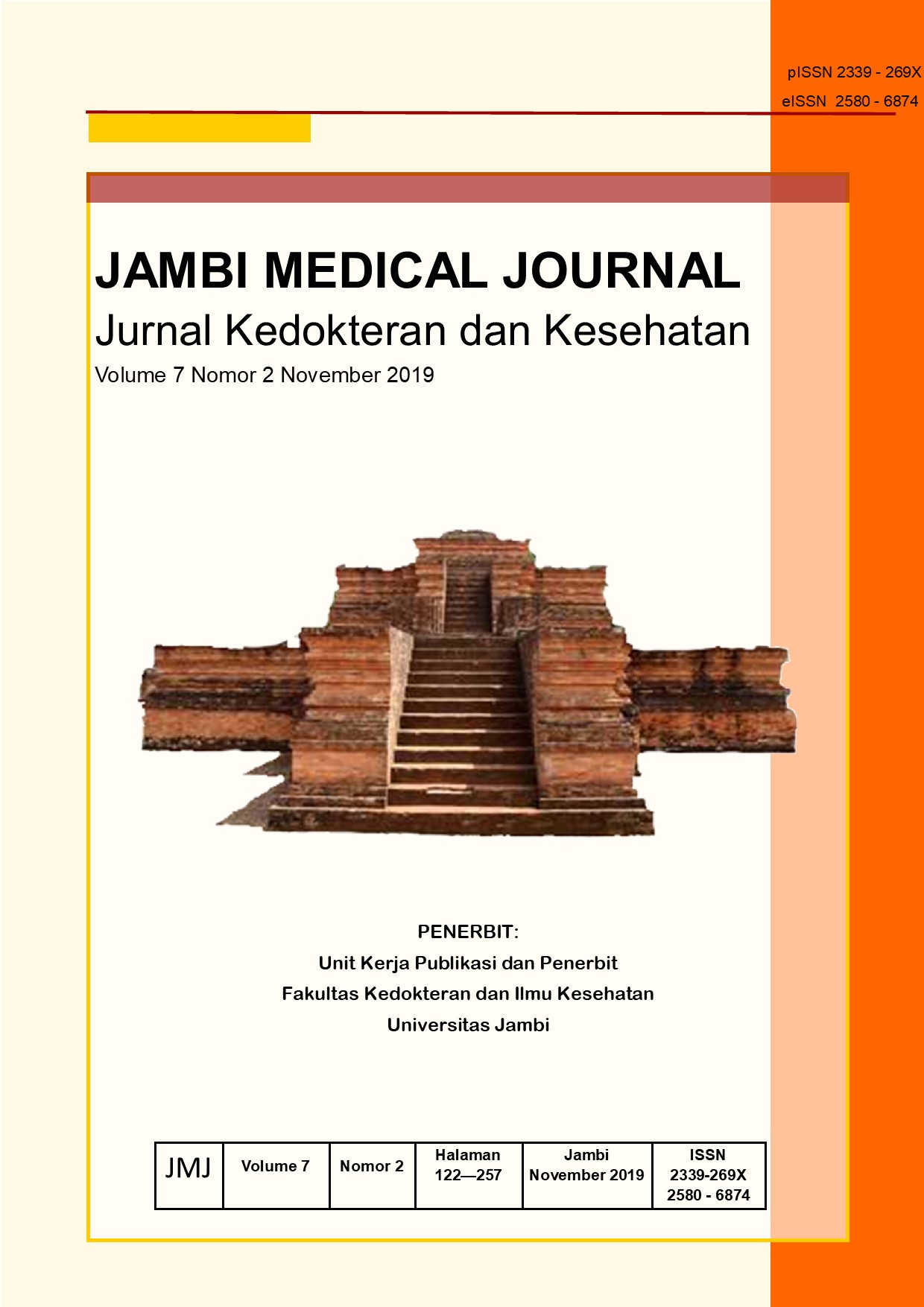LUARAN DINI REPAIR HIPOSPADIA SETELAH PROTOKOL PENCUCIAN GENITAL PREOPERATIF
DOI:
https://doi.org/10.22437/jmj.v7i2.8029Abstract
ABSTRACT
Background: The complications after hypospadias repair are still common in our institution. Previous study in 2015 shows that 42 % develop uretrocutaneus fistula, 6 % had meatal stenosis, and 7 % had wound dehiscense. Infection may be one of the factors that plays role in the development of those complications. Genital toilet before hypospadias repair is tought to be useful in skin cleaning by removing transient flora and some resident flora to reduce the colony which may cause wound infections.
Research Objective: The aim of this study is to review early outcome of hypospadias repair after preoperative genital toilet protocol.
Methods: This is an analytical retrospective study of hypospadias patients underwent repair between January 2015 and August 2018. Goup A without genital toilet and group B All patients received genital toilet using Chloroxylenol 2% twice a day for one week prior to surgery. Postoperative complication such as wound infection, wound dehiscence, meatal stenosis and urethrocutaneus fistula were recorded.
Results: group A were 42 underwent repair in 1 Year periode.Group B were 90 hypospadias patients underwent repair in 2.5 years period foutry five patients (49 %) underwent one stage repair, while 46 patients (51%) underwent staged repair ( 35% chordectomy and scrotoplasty; 16% staged uretroplasty). Wound infections were observed in 3% patient , wound dehiscence in 1 %. Among patients who underwent urethroplasty, uretrocutaneus fistula were developed in 23 % patients and meatal stenosis were developed in 5.% patients. Preoperative genital toilet was significant to decrease complication (p value: 0.044).
Conclusion: preoperative Genital toilet is a safe, simple, and inexpensive method which can reduce the early complication of hypospadias repair
Keywords: outcome, hypospadia, genital toilet
ABSTRAK
Latar Belakang: komplikasi setelah dilakukan repair hipospadia masih sering terjadi di institusi kami. Penelitian sebelumnya menunjukkan 42% berkembang menjadi fistula uretrocutan, 6% meatal stenosis, dan 7% wound dehiscens. Infeksi merupakan salah satu dari faktor yang berperan dalam terjadinya komplikasi tersebut.pencucian genital sebelum dilakukan operasi bisa berguna dalam membersihkan dan menghilangkan transient flora dan beberapa flora pathogen untuk menuruni jumlah koloni yang dapat mengakibatkan infeksi luka operasi. Tujuan penelitian ini menilai luaran dini dari operasi hipospadia setelah dilakukan protocol pencucian genital sebelum operasi.
Metode: penelitian ini merupakan descriptive retrospective study pada pasien hipospadia yang telah dilakukan repair of antara Januari 2015 dan Agustus 2018. Kelompok A tanpa dilakukan protocol dan kelompok B dilakukan protocol Seluruh pasien mendapatkan pencucian genital menggunakan Chloroxylenol 2 % dua kali sehari selama satu minggu sebelum dilakukan pembedahan. Komplikasi pasca operasi seperti infeksi luka operasi, wound dehiscens, meatal stenosis, fistula uretrocutan dicatat.
Hasil: kelompok A sebanyak 42 pasien yang telah dilakukan repair hipospadia selama 1 tahun. kelompok B 90 pasien yang telah dilakukan operasi hipospadia selama 2.5 tahun dimana 43 pasien (49 %) operasi satu tahap, dan 47 pasien (51%) staged repair ( 35% kordektomi dan skrotoplasti; 16% staged uretroplasty). Infeksi luka operasi 3% patien, dehisen 1 %. Pada pasien yang dilakukan uretroplasty, fistula uretrokutan sebanyak 23 % pasien dan meatal stenosis sebanyak 5.% pasien. Pencucian genital sebelum operasi bermakna dalam menurunkan komplikasi (p value: 0.044).
Kesimpulan: Pencucian genital peoperatif merupakan metode yang aman, sederhana, and murah dalam menurunkan komplikasi dini setelah operasi hipospadia.
Kata kunci: outcome, hypospadia, genital toilet











